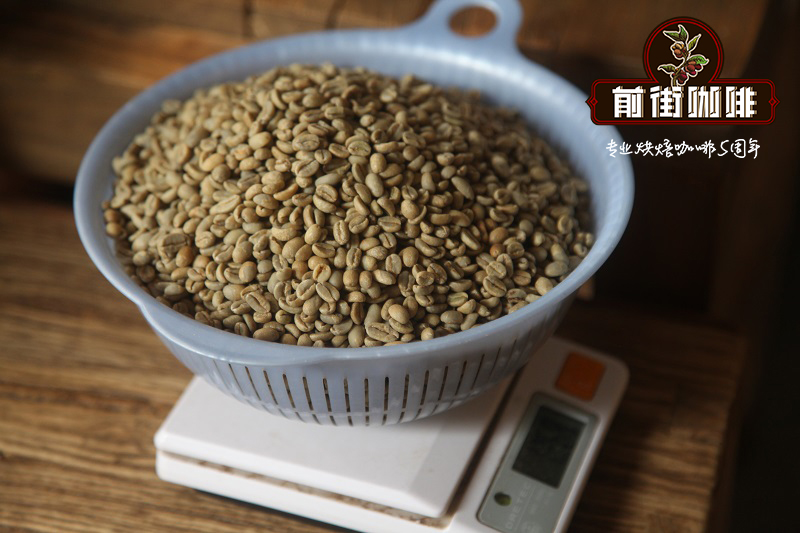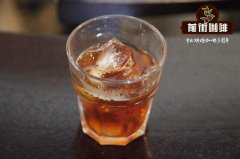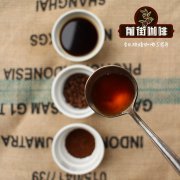The most expensive coffee in the world | Hawaiian coffee brand, how much is a cup of Kona kona coffee on the front street?

Professional coffee knowledge exchange more coffee bean information please follow the coffee workshop (Wechat official account cafe_style)
The most expensive coffee in the world | Hawaiian coffee brand, how much is a cup of Kona kona coffee on the front street?
Hawaii Kona boutique coffee beans 100g Queen Kona Manor fresh shallow baking grinding powder 60 yuan per cup 120 yuan 100g
Hawaii is a beautiful island. It began to grow coffee in the 18th century. Most of the coffee was grown on Kauai Island and the Big Island of Hawaii. It has a very ideal climate and soil. The process is extremely careful, and the appearance of coffee beans is very perfect. But the limited acreage and high wages in the United States are all the reasons why Kona beans are expensive. But Kona coffee, which is perfectly clean and full of unique tropical fruit aroma, cannot be replaced by any other coffee. Kona Coffee is still one of the most expensive coffee on the market, and according to Hawaiian Agriculture Department regulations, coffee can only be called Kona Coffee on the slopes of Hualalai and Mauna Loa in Big Island, Kona. Hawaii has a special flavor on sunny mornings, cloudy and rainy afternoons, mild breezes and mild nights, coupled with mineral-rich volcanic soil.
KONA comes from Hawaii, the largest island of Hawaii, and is located in the KONA area on the Shanxi side of Michael's Mauna Kea in 4200. The tropical rainforest has abundant annual rainfall. Coffee trees are planted on the black gravel of broken volcanic rock, and the local environment is quite suitable for growing coffee beans, so high-quality coffee is cultivated. KONA's low production and small-scale exquisite factories process high-quality raw beans, so the price is high, second only to Jamaican Blue Mountain Coffee. Consumers who have traveled to Hawaii must know that KONA coffee bought in Hawaii tourist areas is not cheap, and many of them are only KONA mixed coffee (KONA beans account for only part of it).
Hawaii is the only state in the United States that grows coffee, which is grown on the five major islands of the Hawaiian Islands: Oahu, Hawaii, Maui, Kauai and Moroca. Coffee from different islands also has its own characteristics. Kauai coffee is soft and smooth, Muroca coffee is high in mellow and low acidity, and Maui coffee is moderately acidic but has the strongest flavor. Hawaiians are extremely proud of the Arabica coffee beans they grow 100% home-grown.
Hawaii is the largest island in the Hawaiian archipelago, so it is also called the theBigIsland. Kona Coffee is produced in the west and south of the Kona region of Hawaii. Coffee trees are scattered on the slopes of Hualalai and MaunaLoa, which is 150m to 750m above sea level, which is suitable for coffee growth.
Coffee experts often compare the Kona coffee produced in Hawaii with the Blue Mountain coffee produced in Jamaica, both have mild and suitable acidity and the sweetness of delicate fruits, but the strict quality control of Kona coffee makes Kona coffee without bad evaluation to maintain a high level of quality, unlike the occasional poor evaluation murmur of Blue Mountain coffee. According to the water content and the purity of soybean seeds, Type 1 was divided into 'Kona Extra Fancy',' Kona Fancy', 'Kona Number 1,' Kona Select', and 'Kona Prime'; Type II Kona coffee were divided into' Peaberry Number 1 'and' Peaberry Prime';, and the lower grade 'Number 3' should not be called Kona Coffee.
How to handle it:
How long will it take to plant coffee trees before they can be harvested and sent to the market for sale? Generally speaking, coffee trees need to be planted for at least three years before they can bear satisfactory fruit. Coffee trees blossom several times a year, so reapers pick fruit eight times a year.
The coffee fruit is ruddy and plump. There are usually two seeds hidden in the fruit, and the seeds are coffee beans. Coffee beans are covered with a thin skin, so remove the pulp and peel first (2), then soak the peeled beans in water (3), and then dry them (4). The number of processed coffee beans is much less than that before processing. Depending on the quality of the finished product, eight sacks of coffee fruit may produce only one sack of roasted coffee beans.
Roasting (5) coffee beans can be said to be an art in itself. in addition to excellent equipment, the baker's skills are also very important. How long coffee beans are roasted mainly depends on the following factors: moisture, weight, grade, quality, required color and weather conditions at that time.
Most of the coffee gardens and mills on the island of Hawaii use modern sales techniques. They welcome the public to visit, visit the production process and taste Kona coffee. Colorful road signs, distinctive old coffee mills, antique cafes and hotels can be seen everywhere. Of course they all sell Kona coffee!
Kona Coffee is fresh, crisp, medium-bodied, slightly sour and full-bodied, with a long finish. Most rarely, Kona Coffee has a blend of wine, fruit and spice, as fascinating as the colorful colors of this volcanic archipelago. Generally speaking, the taste of Kona coffee belongs to a relatively mild category, so that some people think that this gentleness is synonymous with insipid, that Kona is too refreshing and too simple. But if you are the kind of person who must slowly get into the state with the aroma of coffee before tasting it, Kona is the right coffee for you. Because it is not as mellow as Indonesian coffee, not as full-bodied as African coffee, nor as rugged as Central and South American coffee, Kona coffee is like a girl in the Hawaiian sun breeze, fresh and natural, lukewarm.
Bouquet: red wine-like color with citrus and dried fruit aromas, vanilla aromas and sucrose aromas
The obvious acidity in the taste makes people feel fresh and bright, and the aftertaste can feel the flavor of citrus fruits.
Qianjie recommended cooking:
Filter cup: Hario V60
Water temperature: 90 degrees
Degree of grinding: small Fuji 3.5
Cooking methods: the ratio of water to powder is 1:15, 15g powder, the first injection of 25g water, 25 s steaming, the second injection to 120g water cut off, waiting for the powder bed water to half and then water injection, slow water injection until 225g water, extraction time about 2:00
Analysis: using three-stage brewing to clarify the flavor of the front, middle and back of the coffee. Because the V60 has many ribs and the drainage speed is fast, it can prolong the extraction time when the water is cut off.
Important Notice :
前街咖啡 FrontStreet Coffee has moved to new addredd:
FrontStreet Coffee Address: 315,Donghua East Road,GuangZhou
Tel:020 38364473
- Prev

There is no one of the most expensive coffee in the world. How much is a cup of front street [Hawaiian Kona coffee beans]
Professional coffee knowledge exchange more coffee bean information please follow the coffee workshop (Wechat official account cafe_style) one of the most expensive coffee in the world. How much is a cup of front street [Hawaiian Kona coffee beans]? How to cook it? Front Street Kona Coffee 60 yuan 1 cup Hawaii Kona boutique coffee beans 100g Kona Queen Manor fresh shallow baked powder Big Island, Hawaii
- Next

The world's most expensive Jamaica Blue Mountain Coffee beans Story authentic Blue Mountain Coffee how much is a cup
Professional coffee knowledge exchange more coffee bean information please follow the coffee workshop (Wechat official account cafe_style) the price of the world's most expensive Jamaican Blue Mountain coffee? How much is a cup of Jamaican Blue Mountain Coffee on the front street? Front street Jamaica blue mountain coffee beans authentic BlueMount blue mountain NO.1 coffee 100g roasted 158g 100g 60 yuan cup Jamaican coffee beans have a long history
Related
- Detailed explanation of Jadeite planting Land in Panamanian Jadeite Manor introduction to the grading system of Jadeite competitive bidding, Red bid, Green bid and Rose Summer
- Story of Coffee planting in Brenka region of Costa Rica Stonehenge Manor anaerobic heavy honey treatment of flavor mouth
- What's on the barrel of Blue Mountain Coffee beans?
- Can American coffee also pull flowers? How to use hot American style to pull out a good-looking pattern?
- Can you make a cold extract with coffee beans? What is the right proportion for cold-extracted coffee formula?
- Indonesian PWN Gold Mandrine Coffee Origin Features Flavor How to Chong? Mandolin coffee is American.
- A brief introduction to the flavor characteristics of Brazilian yellow bourbon coffee beans
- What is the effect of different water quality on the flavor of cold-extracted coffee? What kind of water is best for brewing coffee?
- Why do you think of Rose Summer whenever you mention Panamanian coffee?
- Introduction to the characteristics of authentic blue mountain coffee bean producing areas? What is the CIB Coffee Authority in Jamaica?

